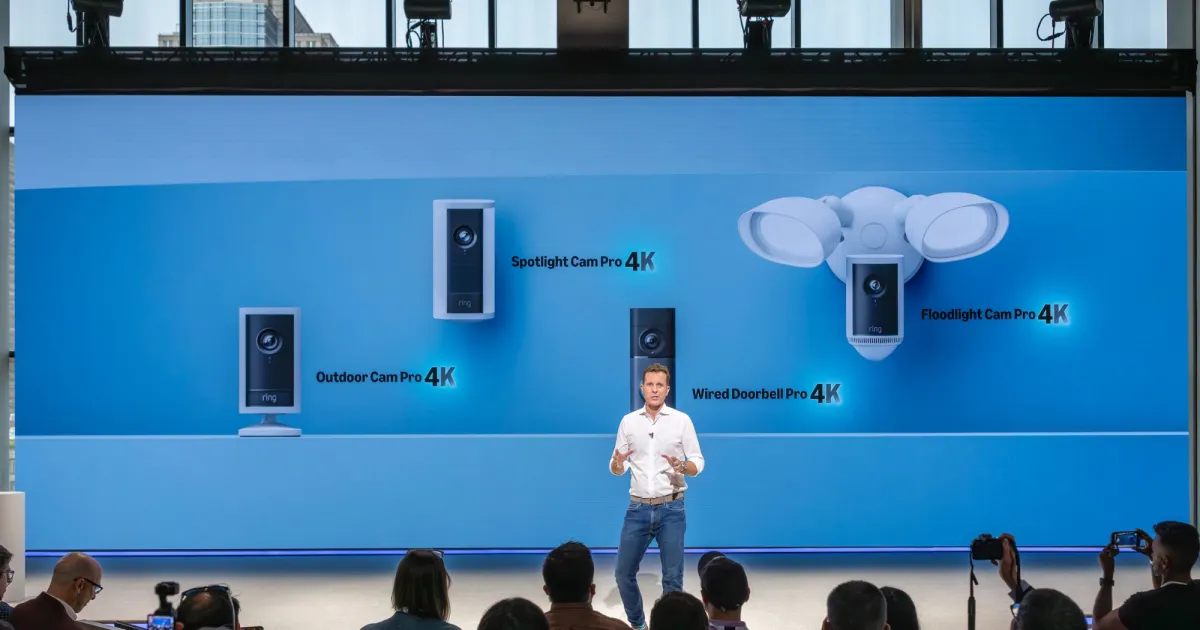
Amazon has concluded its Fall event, and there’s a lot to unpack here. The company revealed a fresh slate of Fire TV models, a dirt-cheap 4K streaming stick, Echo smart display models and speakers, an upgraded Ring doorbell, a Blink camera with dual lens trick, and more. All the devices are up for pre-order in the US, with a whole new software soul to boot.
The big hardware wave
Let’s start with the Kindle Scribe. Amazon’s stylus-toting digital notebook now comes in three flavors and new colors. There’s a new base variant that lacks a frontlit display and starts at $429.99, while the vanilla model is priced at $499.99. The latest addition is the Kindle Scribe Colorsoft, which features a color screen and costs $629.99 in the US.
Next, we have the Fire TV devices. The Fire TV Stick 4K Selects will set you back by $39.99, while the new Omni QLED Series TVs start at $479. Amazon is also adding five new models in the 4-Series and 2-Series Fire TV models, starting as low as $159.99 for the 32-inch model.
The new Echo Dot Max and Echo Studio focus on audio refinements with improved acoustics hardware, while the Echo Show 8 and 11 build on those foundations with better camera, improved display, and more intuitive software with lots of third-party integrations, ranging from fitness to shopping. The Echo speakers start at $99.99, while the Echo Show range is up for grabs at $179.99 for the smaller model.
Finally, we have the cameras and doorbells in the Ring and Blink families. These get a boost in imaging resolution, a wider field of view, and plenty of installation options. They start at $59.99 for the Ring Indoor Cam Plus, and go up to $499.99 for the Wired Doorbell Elite.
Upgrades that go beyond speeding things up
On the Kindle Scribe, Amazon is putting a bunch of new AI-powered reading features. For example, the So Far tool lets users quickly catch up on their progress without any spoilers, while the Ask this Book feature answers reader queries about any portion or passage without exposing the surprises ahead.
These features will also expand to the Kindle app for Apple devices. The Kindle’s software gets a new home page with a dedicated quick notes shortcut, lands support for Google Drive and Microsoft OneDrive to import files, and gets an AI-powered search feature that makes it easier to find notes and ask follow-up questions, as well.
Starting next year, users will also be able to discuss their notes and documents with Alexa+, just the way you do it with a file uploaded in Google Gemini and ChatGPT. The new texture-molded display adds a paper-like friction experience so that users don’t have to deal with a glossy or slippery surface when taking notes with the stylus.
On a similar note, the display on the Echo Show 8 and 11 combines the in-cell touch and negative liquid crystal design to enhance the viewing angles and clarity, even when exposed to bright light sources. The new smart display also gets a unified entertainment hub, Alexa+ shopping widget, and integration with Oura to get the most out of the screen for fitness enthusiasts.
Amazon’s custom AZ3 series processors also focus on boosting the ambient awareness. In a nutshell, you don’t necessarily have to speak close to the device’s onboard mic array. Amazon says “anyone can talk to from anywhere in the room,” and thanks to the language chops of Alexa+, the conversations will be free-flowing and less robotic.
Easing everyday experiences
Tagging alongside the enhanced environmental sensing is the improved AI-powered noise filtering to improve the experience. I’ve often struggled with my smart speaker misunderstanding commands, or just not picking up the voice gesture, all because I was a tad far in the other room or there were a bunch of people talking in the same room.
Another notable perk that audiophiles will appreciate is the automatic chaining and recognition of a multi-unit system to offer a surround sound experience. Amazon says users can connect up to five Echo Studio or Echo Dot Max, and all it takes is a plug-and-play approach to intelligently detect and automatically tune each speaker in the group. Amazon will also sell dedicated Alexa Home Theater bundles to help users achieve that immersive listening experience on a budget.
Shifting to the smart cameras, the new Ring hardware embraces Retinal Vision imaging tech. Aside from the improved resolution, these cameras rely heavily on AI to offer features such as Familiar Faces (for identifying friends and family) to ensure that users are not triggered by a barrage of notifications every time the camera detects activity.
Dialogue Boost is another feature that I love. Simply put, it uses AI to enhance the vocal conversations, especially against the backdrop of loud music or other sound effects. It arrived as an accessibility perk for Amazon’s Prime Video content back in 2023, but it’s now offered by default across the entirety of the new Fire TV hardware.
Netflix users have been plagued by the weak dialogue volume problem for years. It’s almost funny that Amazon’s Fire TV hardware will solve that problem for streaming fans.
In fact, the notifications will also be tagged alongside personalized summaries. The most notable addition is the new Search Party for dogs feature, an AI-driven community-focused feature that will help users find lost dogs using the Ring Neighbors app to identify and alert about missing pets.
Generous help from a next-gen AI Assistant
Then we have Alexa+ Greetings, which works somewhat similarly to call screen and hold assist calling features on smartphones. The idea here is that when you are not around, the onboard mic/speaker array will allow Alexa+ to engage a visitor and identify the purpose of their visit. Users can also customize this feature to handle deliveries and offer instructions for visitors, too.
My favorite reveal was the Blink Arc, a cheap mount that lets users put Blink Mini 2K+ cameras and achieve full 180-degree panoramic vision without having to deal with the hassle of complex multi-camera setups. And yeah, the videos from each lens will be seamlessly stitched, all for just $19.99, or $99.99 for the dual-camera package.
Of course, we have Alexa+, the next-gen assistant that is a lot smarter, comes with memory features, and integrates seamlessly across all services. The best part about the entire hardware slate is that Alexa+ runs on them out of the box, which means you don’t have to go through the hassle of early access registration or stay on the waitlist.
Overall, Amazon paid as much attention to iterative hardware upgrades and internal refinements this year as it did to building meaningful software experiences. And at the end of the day, that’s what smart home devices should be all about. Getting work done, without getting you worked up.



